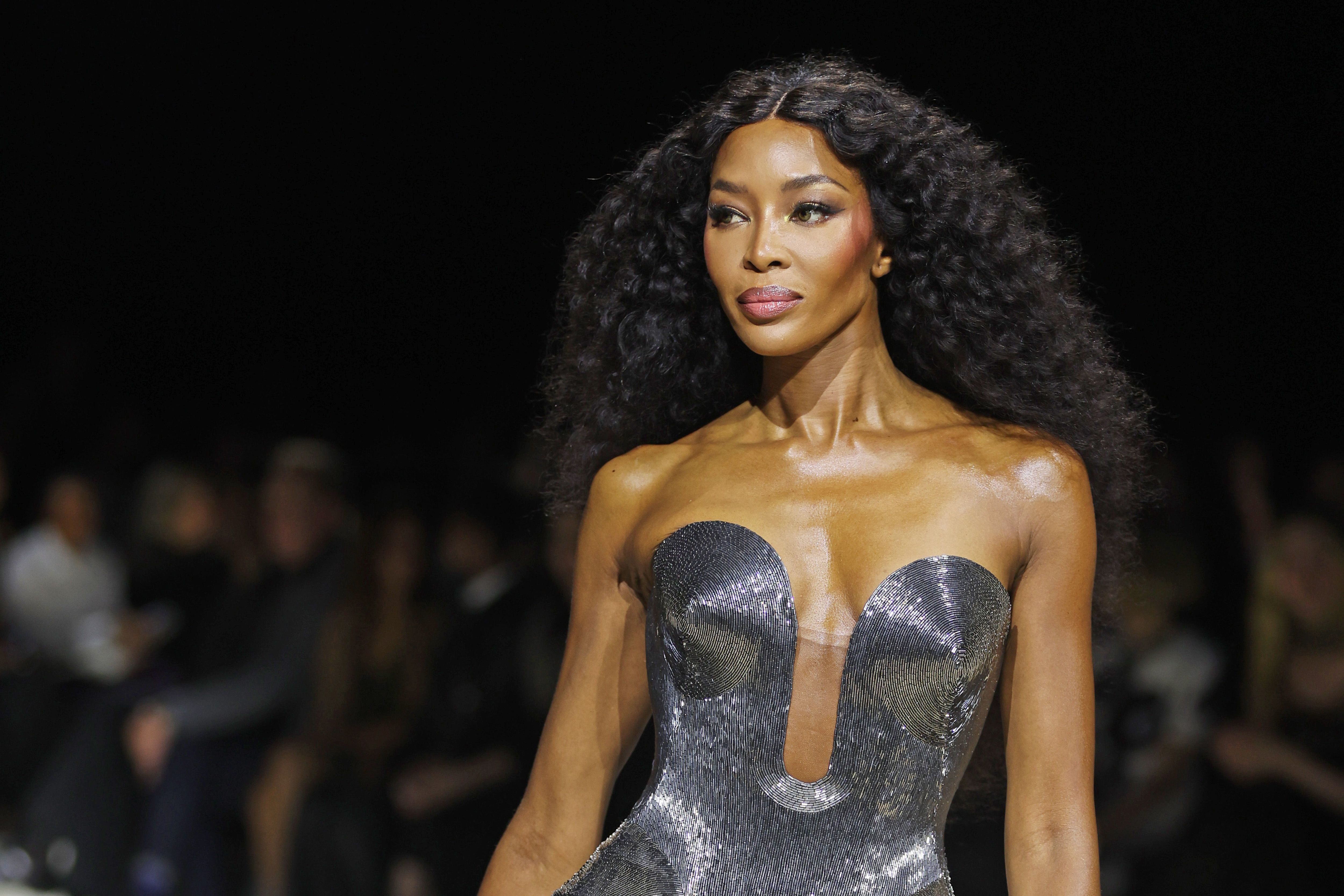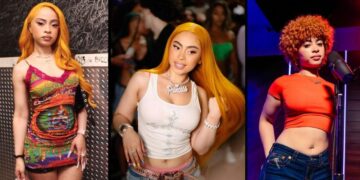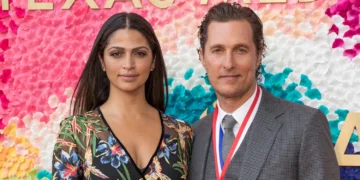In the glamorous world of high fashion, few names command as much respect and recognition as Naomi Campbell. For over three decades, this British-born supermodel has graced countless magazine covers, dominated runways worldwide, and shattered glass ceilings for women of color in the fashion industry. More than just a pretty face, Campbell has evolved into a multifaceted entrepreneur, activist, and cultural icon whose influence extends far beyond the catwalk. This article explores how Naomi Campbell forever transformed the fashion landscape and continues to inspire generations of models and fashion enthusiasts alike.
The Early Years: A Star Is Born
Born on May 22, 1970, in London, England, Naomi Campbell was discovered at the tender age of 15 while shopping in Covent Garden. Her natural grace, striking features, and magnetic presence quickly caught the attention of industry professionals. By age 16, she appeared on the cover of British Elle, launching what would become one of the most illustrious careers in fashion history.
Campbell’s rise wasn’t without challenges. As a Black model in the predominantly white fashion industry of the 1980s, she faced discrimination and prejudice. However, her determination and undeniable talent propelled her forward. In 1988, she made history as the first Black model to appear on the cover of French Vogue, breaking an important barrier for models of color.
The Supermodel Era: Defining an Industry

The late 1980s and early 1990s marked the birth of the “supermodel” phenomenon, and Naomi Campbell stood at its epicenter. Alongside fellow icons Cindy Crawford, Linda Evangelista, Christy Turlington, and Claudia Schiffer, Campbell helped elevate models from mere clothes hangers to cultural superstars with tremendous influence and bargaining power.
This elite group, sometimes referred to as “The Big Five,” commanded unprecedented fees and attention. Campbell’s fierce runway walk, characterized by its powerful stride and impeccable timing, became her signature. Fashion designers didn’t just want her in their shows—they needed her. Her presence elevated brands and guaranteed media coverage.
In 1991, when Gianni Versace sent Campbell and her supermodel contemporaries down the runway lip-syncing to George Michael’s “Freedom! ’90” (a music video they had all starred in), it cemented the supermodel era as a cultural movement. Campbell’s role in this pivotal moment in fashion history cannot be overstated.
Breaking Barriers: Representation Matters
Throughout her career, Naomi Campbell has been a trailblazer for diversity in fashion. Her success opened doors for countless Black models who followed her. In 1989, she became the first Black model to grace the cover of American Vogue’s prestigious September issue. Later, she would become the first Black model to open a Prada show in 1997.
Campbell has been vocal about the discrimination she faced, including being paid less than her white counterparts for equal work. Rather than accepting the status quo, she used her platform to advocate for change. Her persistence and outspokenness helped draw attention to the fashion industry’s diversity problem long before inclusivity became a mainstream talking point.
In 2013, she co-founded the Diversity Coalition with fellow model Iman and activist Bethann Hardison to address racial discrimination in fashion. Their work involved directly challenging designers who failed to include models of color in their shows, creating accountability within an industry notorious for its exclusivity.
Beyond Modeling: Business Ventures and Philanthropy

Naomi Campbell‘s business acumen has allowed her to expand her influence beyond modeling. She has launched successful perfume lines, appeared in music videos, released an R&B album, written books, and even created her own reality TV competition, “The Face.”
Her philanthropic efforts are equally impressive. In 1993, Nelson Mandela referred to Campbell as his “honorary granddaughter,” recognizing her support for South African causes. In 2005, she established Fashion for Relief, a charity that organizes fund-raising fashion shows to support victims of disasters worldwide. The organization has raised millions for causes ranging from Hurricane Katrina relief to the fight against Ebola.
Campbell’s dedication to charitable work in Africa has been particularly notable. She has supported various initiatives across the continent and continues to use her platform to highlight issues affecting African communities.
The Digital Age: Reinvention and Continued Relevance
While many models of Campbell’s generation have faded from the spotlight, Naomi Campbell has successfully navigated the transition to the digital age. In 2018, she launched her YouTube channel, “Being Naomi,” offering fans glimpses into her personal and professional life.
During the COVID-19 pandemic, her “No Filter with Naomi” series featured candid conversations with celebrities and fashion insiders, demonstrating her ability to stay relevant in changing times. Her mastery of social media has allowed her to connect with younger generations who might not have witnessed her runway dominance in the 1990s.
Even in her 50s, Campbell continues to book major campaigns and runway shows, defying industry ageism. In 2019, she received the Fashion Icon Award from the British Fashion Council, recognizing her immense contribution to the industry. In 2021, she surprised the world by announcing she had become a mother, embracing this new chapter of her life while maintaining her career momentum.
Legacy: The Campbell Effect

Naomi Campbell‘s legacy extends far beyond her modeling achievements. She has transformed how the world views Black beauty, challenged systemic racism in fashion, and proved that models can be powerful business moguls and activists.
Today’s more diverse runways owe much to Campbell’s persistent advocacy. The rise of Black supermodels like Adut Akech, who Campbell has personally mentored, demonstrates her lasting impact on the industry. Her influence can be seen in everything from increased representation in fashion magazines to more inclusive beauty standards.
Campbell’s resilience in the face of adversity and her ability to reinvent herself over decades have made her not just a fashion icon but a cultural phenomenon. She has shown that true supermodels don’t just wear clothes—they change culture.
As we look to the future of fashion, Naomi Campbell‘s impact remains unmistakable. She didn’t just change fashion temporarily; she transformed it forever, leaving an indelible mark on an industry that will forever bear the imprint of her fierce walk, indomitable spirit, and groundbreaking achievements.
(FAQs) About Naomi Campbell
1. What made Naomi Campbell a “supermodel” rather than just a model?
Naomi Campbell earned the title “supermodel” through her extraordinary impact on the fashion industry. Unlike regular models, Campbell achieved global name recognition, commanded premium fees, influenced fashion trends, and transcended the industry to become a cultural icon. Her status as one of “The Big Five” supermodels of the 1990s, alongside her historical achievements as the first Black model to grace several major magazine covers, cemented her supermodel status.
2. How did Naomi Campbell change the fashion industry for models of color?
Campbell broke numerous racial barriers throughout her career, becoming the first Black model on several prestigious magazine covers and runway shows. She has been outspoken about racism in fashion and co-founded the Diversity Coalition to address discrimination. Her advocacy helped create more opportunities for models of color and pushed the industry toward greater inclusivity and representation.
3. What are some of Naomi Campbell’s most significant achievements outside of modeling?
Beyond modeling, Campbell has established herself as a successful entrepreneur with perfume lines and fashion collaborations. Her philanthropic organization, Fashion for Relief, has raised millions for various causes worldwide. She’s also ventured into television production, writing, and acting. Her mentorship of young models, particularly those from Africa, represents an important part of her legacy as well.
4. Why is Naomi Campbell still relevant in today’s fashion world after more than 30 years?
Campbell has maintained her relevance through constant reinvention and adaptation. She’s embraced digital platforms like YouTube and Instagram to connect with new generations, continues to walk major runways and appear in high-profile campaigns, and uses her platform for meaningful advocacy. Her business acumen, combined with her legendary status and continuing work as a model, keeps her at the forefront of fashion conversations.
5. What is Naomi Campbell’s relationship with Africa?
Campbell has deep connections to Africa and has been named an honorary citizen of several African nations. She regularly supports African designers and models, bringing global attention to the continent’s fashion talent. Her philanthropic work includes numerous African causes, and she has been particularly vocal about the need for greater recognition of African contributions to the fashion world. Former South African President Nelson Mandela referred to her as his “honorary granddaughter” due to her support for South African causes.













































































